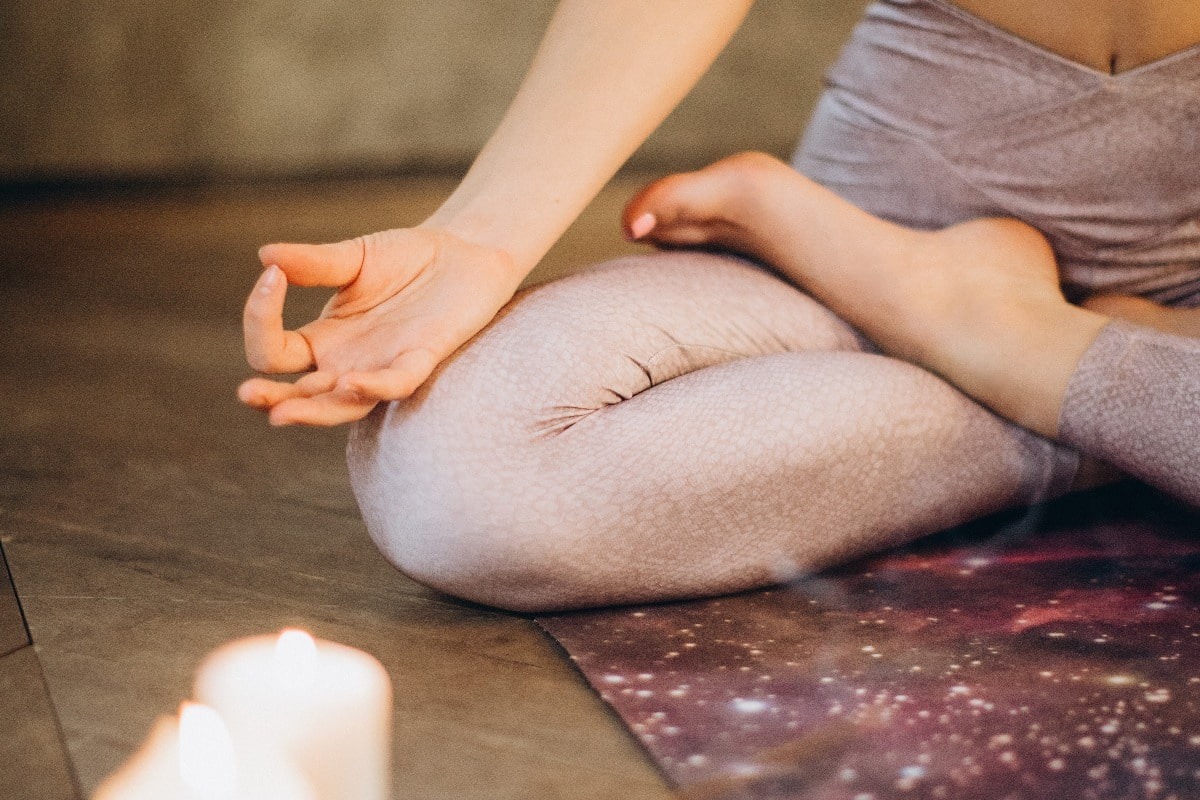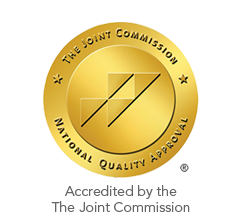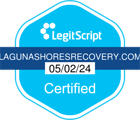Yoga for Addiction Recovery in Orange County
Research shows that yoga can reduce substance cravings and negative mood states, two of the strongest predictors of relapse, and promote long-term recovery when paired with clinical treatment. It engages the brain’s reward and stress systems, helping to regulate emotions and strengthen inhibitory control, crucial steps in rewiring addiction’s hold.
When we broaden our lens to include movement alongside traditional therapy, the benefits grow: one comprehensive review found that adding physical activity, such as yoga, to standard treatment led to significantly greater reductions in substance use in about three-quarters of the studies examined. By weaving yoga into our holistic approach, Laguna Shores Recovery offers a path to healing that nourishes not just the body but the resilient spirit within.
Physical Benefits
- Improves flexibility and strength: Regular practice loosens tight muscles, builds stability, and increases range of motion.
- Boosts circulation and heart health: Certain poses and breathing exercises support cardiovascular function and lower blood pressure.
- Supports chronic pain relief: Yoga can help manage back pain, arthritis, and other long-term physical conditions.
- Enhances balance and posture: By strengthening core muscles and increasing body awareness, yoga can reduce the risk of falls and injuries.
Mental Health Benefits
- Reduces stress: Yoga lowers cortisol (the stress hormone) and activates the relaxation response.
- Improves focus and clarity: Breath control (pranayama) and meditation aspects sharpen concentration and calm racing thoughts.
- Supports mood regulation: Studies show yoga can reduce symptoms of depression and anxiety, promoting emotional stability.
- Encourages mindfulness: Being present during poses and breathwork teaches skills for coping with daily stressors.
Spiritual and Emotional Benefits
- Promotes self-compassion: Yoga encourages listening to your body without judgment.
- Fosters connection: Many practitioners report feeling more connected to themselves and others.
- Encourages resilience: Learning to breathe through discomfort on the mat builds skills for navigating challenges off the mat.
- Supports recovery: For people in addiction recovery, yoga can reduce cravings, soothe withdrawal stress, and strengthen coping mechanisms.
Holistic Health Benefits
- Better sleep: Relaxation and stress reduction often lead to improved sleep quality.
- Immune support: Stress reduction and improved circulation help strengthen the body’s natural defenses.
- Energy and vitality: Consistent practice can leave you feeling more energized, centered, and balanced throughout the day.

Scientific Evidence Supporting Yoga and Addiction Recovery
Research on yoga’s effectiveness in addiction recovery is growing. A 2017 study published in the Journal of Substance Abuse Treatment found that participants who practiced yoga alongside traditional therapy reported reduced cravings and improved mood. Another study in 2019 showed that yoga helped decrease anxiety and depression symptoms in individuals recovering from opioid addiction.
These findings suggest that yoga is not a replacement for medical treatment but a valuable complement that enhances overall recovery outcomes. Additionally, the practice of yoga encourages a sense of community and support among participants, which can be crucial for those in recovery. Group yoga sessions foster connections and shared experiences, helping individuals feel less isolated in their journey. This social aspect can significantly enhance motivation and accountability, which are vital for long-term recovery.
Yoga’s emphasis on self-compassion and acceptance can be transformative for individuals grappling with the guilt and shame often associated with substance use disorders. By cultivating a non-judgmental attitude towards oneself, practitioners can learn to embrace their imperfections and foster a healthier self-image. This shift in perspective not only aids in emotional healing but also encourages individuals to engage more fully in their recovery process, making them more resilient in the face of challenges.
How Yoga Addresses the Root Causes of Addiction
Many people with addiction histories have experienced trauma. Trauma can disrupt the brain’s ability to regulate emotions and stress responses, contributing to substance use as a coping mechanism. Yoga encourages gentle movement and mindful breathing, which can help release stored tension and trauma held in the body.
Trauma-sensitive yoga programs are designed specifically for individuals with trauma histories, creating a safe space to reconnect with their bodies without feeling overwhelmed. These classes often incorporate elements of grounding techniques, allowing participants to feel more anchored in the present moment. By focusing on the breath and engaging in restorative postures, individuals can begin to process their experiences in a supportive environment, facilitating a gradual healing journey.
Yoga cultivates emotional resilience by teaching practitioners to observe their thoughts and feelings without judgment. This practice of mindfulness can reduce impulsivity and increase the ability to cope with difficult emotions, which are common triggers for relapse.
The community aspect of yoga can also play a significant role in recovery. Group classes provide a sense of belonging and support, which can be invaluable for those who may feel isolated in their struggles. Sharing experiences with others who understand the challenges of addiction can foster connection and empathy, reinforcing the idea that healing does not have to be a solitary journey. Additionally, regular practice helps to establish a routine, which can be crucial for individuals seeking to replace unhealthy habits with positive, life-affirming ones.
Addiction often disrupts the brain’s natural reward pathways and self-regulation systems, making it difficult for individuals to manage cravings or recognize triggers. Yoga helps rebuild this connection by strengthening interoception, the awareness of internal signals such as hunger, emotions, and urges. By cultivating this heightened self-awareness, individuals can pause, identify cravings before they escalate, and choose healthier coping strategies. Over time, this rewiring of the brain-body connection supports long-term relapse prevention and empowers people to feel more in control of their recovery by overcoming their substance use disorder.
Be Brave. Get Help.
Incorporating Yoga Into Addiction Recovery Programs
Types of Yoga Beneficial for Addiction Treatment
1. Hatha Yoga
- Why it helps: Hatha is often considered the foundation of all yoga. It focuses on slow movements, gentle poses, and mindful breathing.
- Benefit for recovery: Builds body awareness, eases stress, and gives people in early treatment a safe entry point without overwhelming physical demands.
3. Yin Yoga
- Why it helps: Involves holding poses for longer periods (2–5 minutes), gently stretching connective tissues, and encouraging stillness.
- Benefit for recovery: Teaches patience, acceptance, and the ability to “sit with discomfort”—all critical skills for relapse prevention.
5. Trauma-Informed Yoga
- Why it helps: Specifically designed to create a safe, choice-based environment for people who have experienced trauma.
- Benefit for recovery: Many with substance use disorders also live with PTSD or trauma histories. Trauma-informed yoga emphasizes empowerment, safety, and gentle self-connection.
2. Restorative Yoga
- Why it helps: Uses props (blankets, bolsters, blocks) to fully support the body in deep relaxation poses.
- Benefit for recovery: Promotes calm, reduces anxiety, and can be especially helpful for clients dealing with insomnia, withdrawal-related stress, or trauma.
4. Kundalini Yoga
- Why it helps: Combines movement, breathwork, chanting, and meditation.
- Benefit for recovery: Known for its grounding and energizing effects, this style helps balance mood, increase vitality, and quiet racing thoughts often associated with cravings.
6. Mindfulness-Based Yoga (Yoga + Meditation)
- Why it helps: Integrates traditional yoga postures with mindfulness techniques.
Benefit for recovery: Helps rewire stress responses
It should be noted that more vigorous yoga techniques (like Power Yoga or Bikram/Hot Yoga) can sometimes be too physically demanding or triggering in early recovery, though some clients may grow into them as their healing progresses.
Tips for Starting Yoga as a Part of Holistic Treatment
For those new to yoga in addiction recovery, it’s important to find a qualified instructor who specializes in holistic therapy. Here are some tips to get started:
- Start Slow: Begin with gentle classes to build comfort and confidence.
- Be Consistent: Regular practice, even if brief, can yield better results.
- Listen to Your Body: Avoid pushing into pain or discomfort.
- Combine with Other Therapies: Use yoga alongside counseling and medical treatments.
Personal Stories: Yoga’s Impact on Addiction Treatment
These stories highlight yoga’s potential to empower individuals on their healing journey, providing tools to cope with challenges beyond traditional therapy.
Challenges and Considerations
- Accessibility: Not everyone has access to yoga classes or instructors trained in addiction recovery.
- Physical Limitations: Some individuals may have injuries or health conditions that require modifications.
- Emotional Triggers: Certain poses or meditation practices might bring up difficult emotions; guidance from a skilled instructor is crucial.
It’s important to approach yoga as part of a comprehensive recovery plan tailored to individual needs.
Looking Ahead: The Future of Yoga in Addiction Recovery
Ongoing research will continue to clarify the best practices for using yoga in this context, helping healthcare providers and patients make informed choices.
Embrace a Holistic Healing Journey with Evidence-Based Treatment
Detox is often the most physically and emotionally demanding stage of recovery, as the body adjusts to life without drugs or alcohol. Evidence-based detox programs at Laguna Shores include medical supervision and, when appropriate, medication-assisted treatment (MAT) to safely manage withdrawal symptoms. Alongside these clinical interventions, yoga can play a supportive role by reducing anxiety, easing muscle tension, and improving sleep, common challenges during early withdrawal. Gentle forms of yoga, combined with mindfulness and breathing techniques, help calm the nervous system, making the detox process less overwhelming and more sustainable.
Once detox is complete, the focus shifts to building the foundation for long-term recovery in residential treatment. At this stage, clients participate in a variety of therapeutic modalities, such as Cognitive behavioral therapy (CBT), dialectical behavior therapy (DBT), group therapy, and family therapy.
These evidence-based approaches address the psychological and relational aspects of addiction, while yoga complements them by teaching clients how to regulate emotions, manage cravings, and reconnect with their bodies in a safe, healing way. In residential care, yoga becomes part of a holistic daily routine, helping clients not only process difficult emotions uncovered in therapy but also cultivate inner resilience that supports lasting sobriety.
Take the Next Step Toward Healing With Yoga for Addiction Recovery
Yoga for addiction recovery helps provide mental clarity and inner peace as you do the difficult work towards long-term sobriety. For more information on the potential benefits of holistic therapy, contact Laguna Shores Recovery today!

 Matthew Beck B.A, M.A, LMFT
Matthew Beck B.A, M.A, LMFT 


